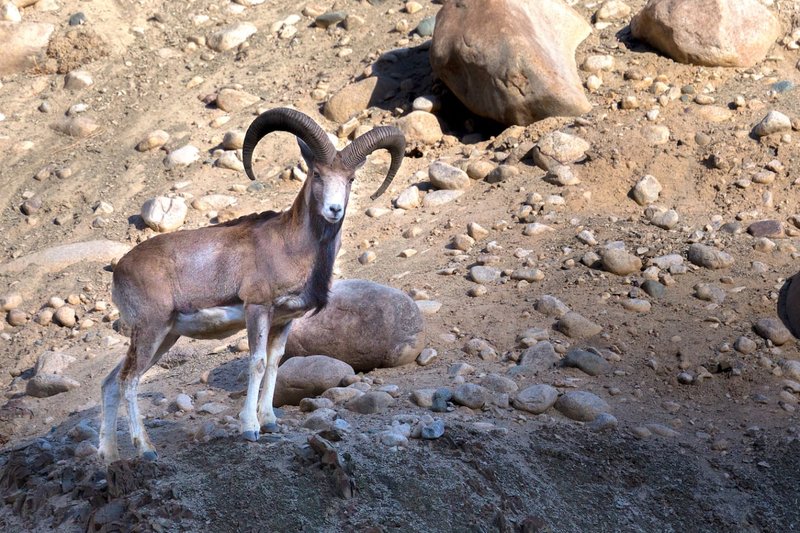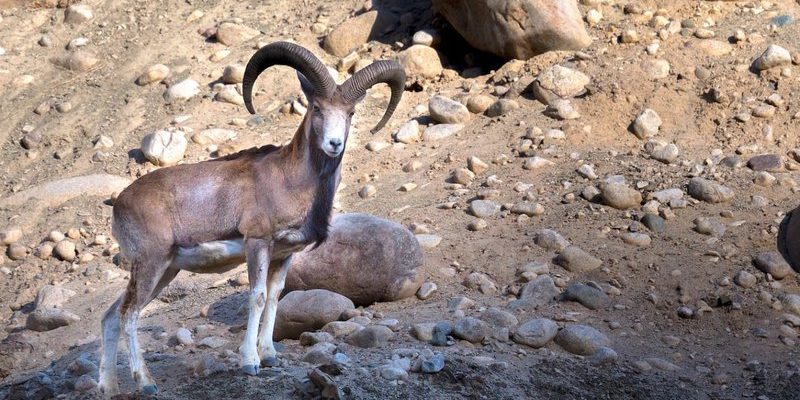
From its unique adaptations to its rich interactions with the environment, the Urial is a living testament to nature’s resilience. In this article, we’ll dive deep into the Urial’s evolutionary journey. We’ll explore how it has adapted over millions of years and what makes it a crucial part of its ecosystem. If you’re curious about where this striking animal came from and how it fits into the grand tapestry of life on Earth, grab a cup of coffee and let’s chat!
Where It All Began: The Origins of the Urial
To understand the Urial, we first need to take a step back in time. The Urial belongs to the Bovidae family, which includes various species of antelopes, cattle, and sheep. This family branched off from other ungulates around 20 to 30 million years ago. This was a time when climate and geography were rapidly changing, setting the stage for different species to adapt to diverse environments.
The earliest ancestors of the Urial are thought to have emerged in the Asian mountains. These ancestors gradually evolved into distinct populations, each adapting to its unique habitat. The Urial’s adaptations—like its long legs and impressive curved horns—help it navigate steep, rocky landscapes. Think of it as nature’s way of equipping this species to thrive where other animals might struggle.
Physical Characteristics: Keeping It Stylish and Functional
The Urial is not just another sheep; it boasts some striking physical features. Males, known for their impressive curved horns, can weigh between 75 to 120 pounds. The females, while smaller, possess a more delicate appearance. Their coats range from reddish-brown to grayish, which helps them blend into the rocky terrain. This camouflage offers protection from predators, allowing them to remain undetected.
The Urial’s legs are long and powerful, designed for agility and speed. When you’re scaling steep cliffs or darting across rocky hillsides, having strong legs is a must! This adaptability allows Urials to escape from predators like leopards and wolves, showcasing their ability to navigate challenging environments.
Habitat and Distribution: The Urial’s Home Sweet Home
Urials primarily inhabit mountainous regions, open grasslands, and scrub forests across countries such as Pakistan, India, and parts of Afghanistan. Their choice of habitat isn’t just random; it’s influenced by their need for food, shelter, and security. These areas provide ample grazing opportunities, which keeps Urials well-fed.
You might be wondering how these animals manage to thrive in such diverse environments. The answer lies in their ability to adapt their diets. They are grazers, munching on grasses, herbs, and shrubs. In harsh winters, they can even forage for woody plants. No matter the season, the Urial’s adaptability ensures it can find something to eat, which is vital for its survival.
Behavioral Adaptations: Smart Survival Strategies
The Urial isn’t just a pretty face; it’s got some clever survival tactics up its sleeve. These sheep are social animals, often seen in groups for protection. Living in herds helps them spot predators more easily, as more eyes are scanning the environment. Their social structure typically includes a dominant male leading a group of females and young, a classic strategy seen in many herd animals.
During the mating season, the males will often engage in fierce battles, clashing their impressive horns. This display isn’t just for show; it helps determine which male gets the chance to mate. It’s a fascinating aspect of their reproductive behavior, combining strength with strategy.
Conservation Status: Challenges in the Modern World
Sadly, the Urial faces significant threats today. Habitat loss due to agriculture, human encroachment, and poaching have led to a decline in their populations. The Urial is classified as Near Threatened by the IUCN, reminding us that even the most resilient creatures need protection.
Conservation efforts are essential to ensure the survival of the Urial. Protected areas and wildlife reserves are being established to safeguard their habitats. Plus, raising awareness about their plight can encourage communities to engage in sustainable practices that benefit both the Urial and local ecosystems. Every effort counts in preserving these beautiful animals for future generations.
The evolutionary history of the Urial is a captivating story of adaptation, survival, and resilience. This unique wild sheep showcases how nature evolves to meet challenges and thrive in even the harshest conditions. From its stunning physical characteristics to its clever social behaviors, the Urial reminds us of the beauty and complexity of life on Earth.
As we continue to learn about the Urial and the threats it faces, it’s essential to appreciate the role these animals play in our ecosystems. By understanding and promoting conservation efforts, we can help ensure that the Urial’s story continues for years to come. So the next time you hear about this incredible creature, remember its journey and the importance of protecting it.

